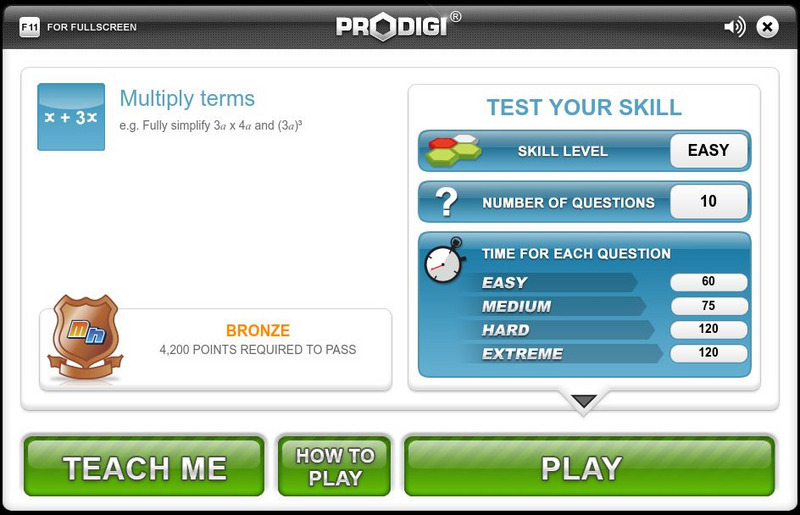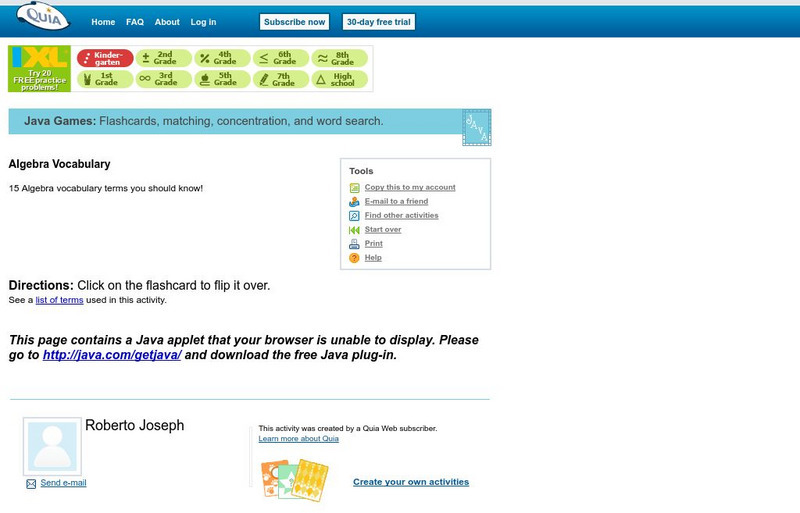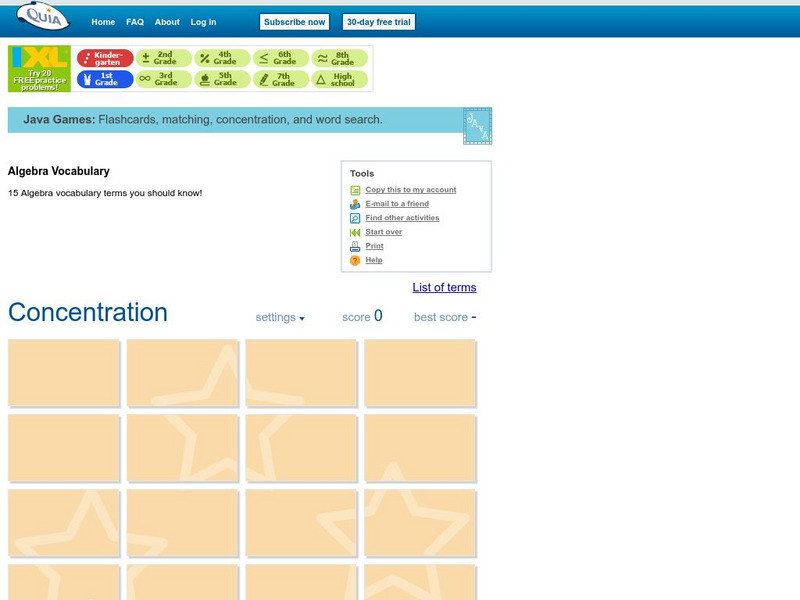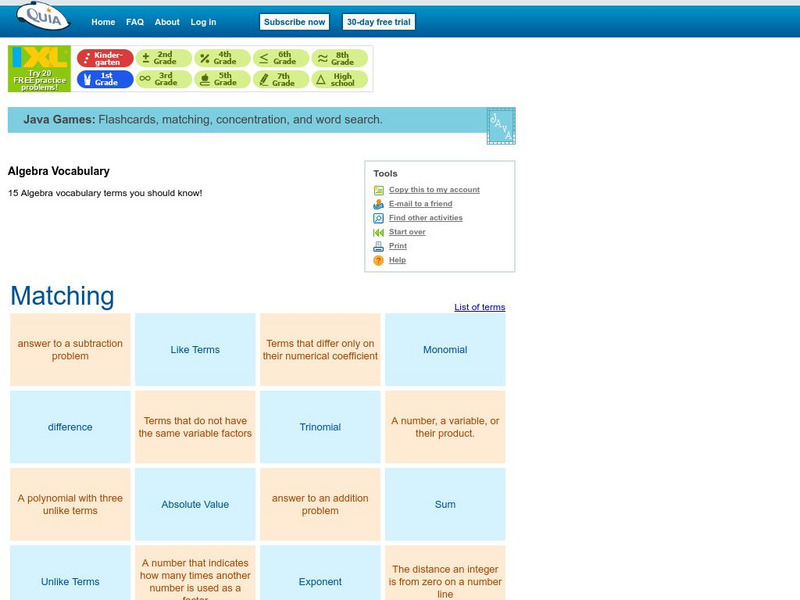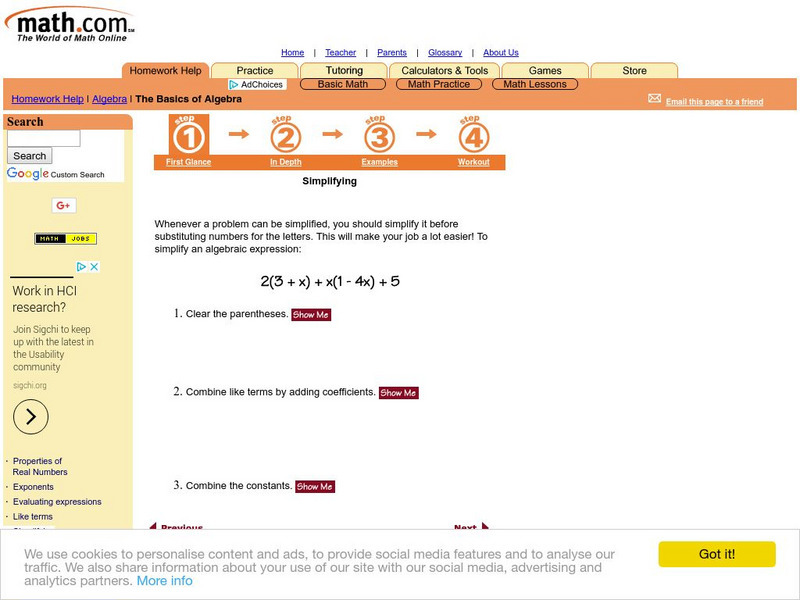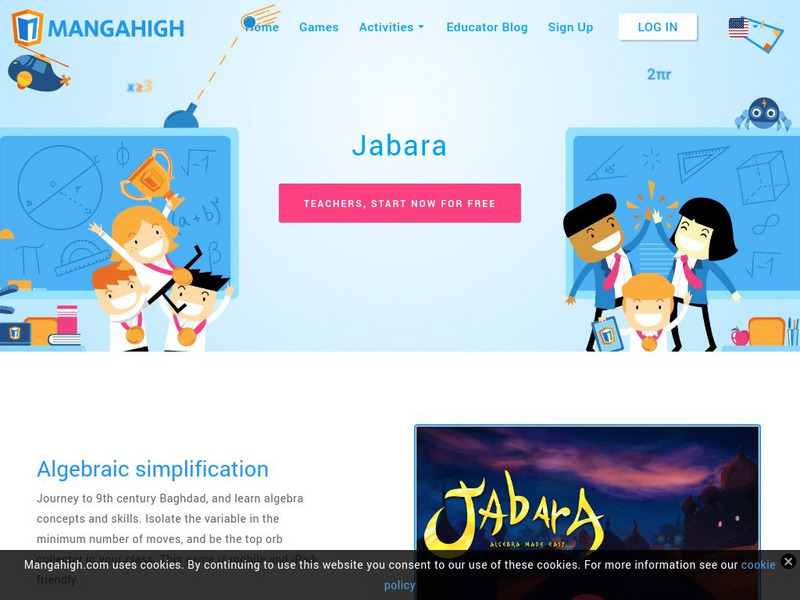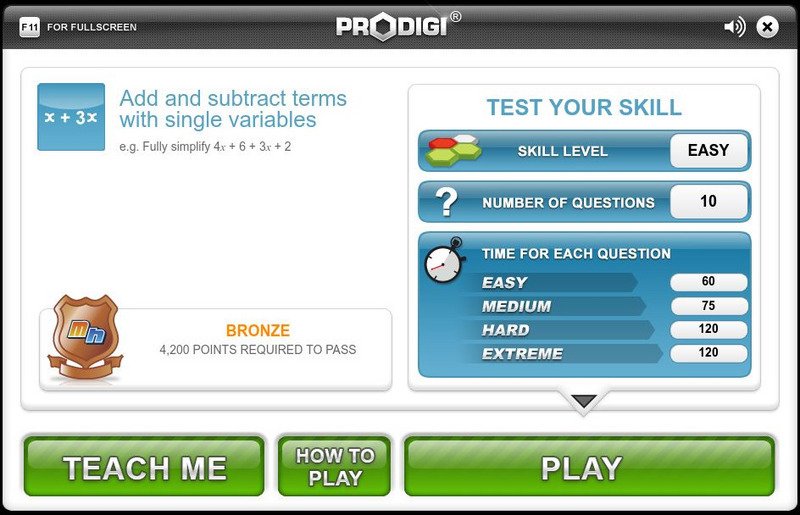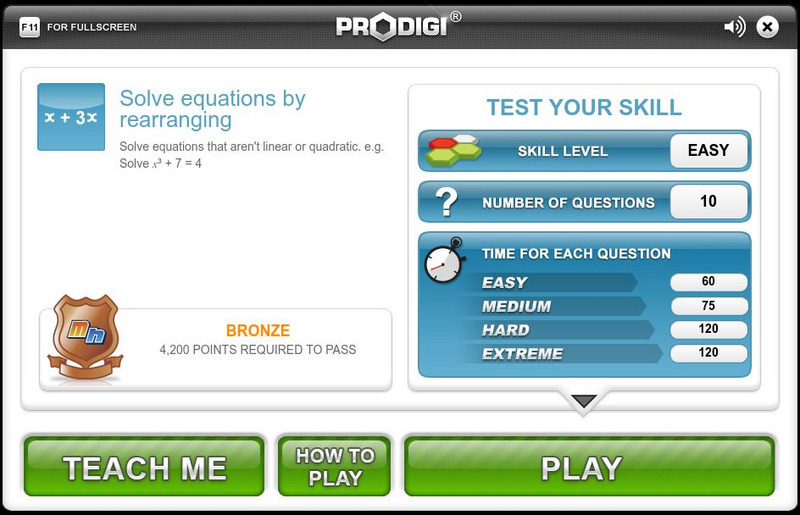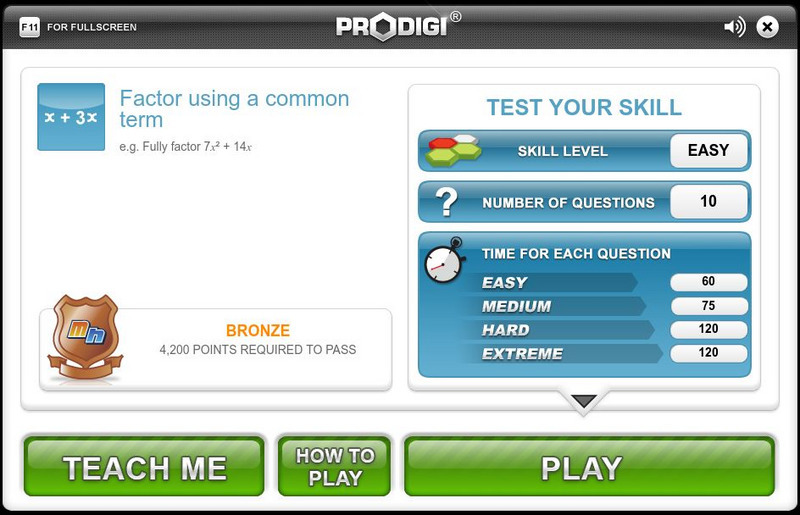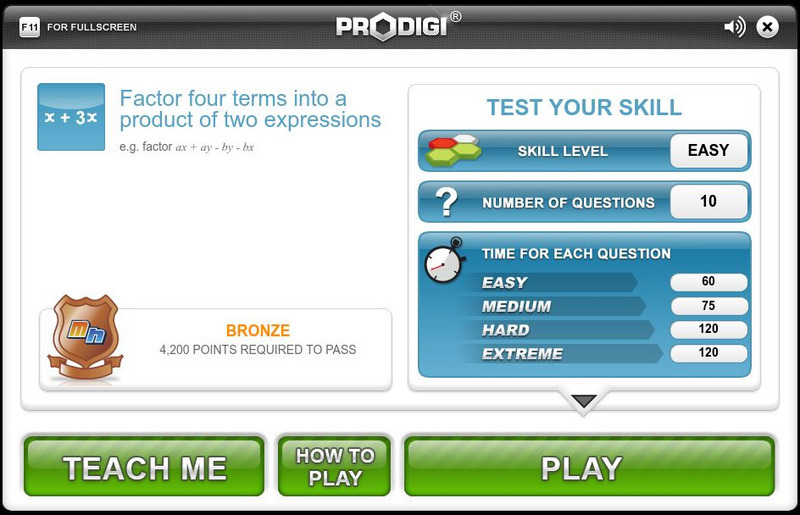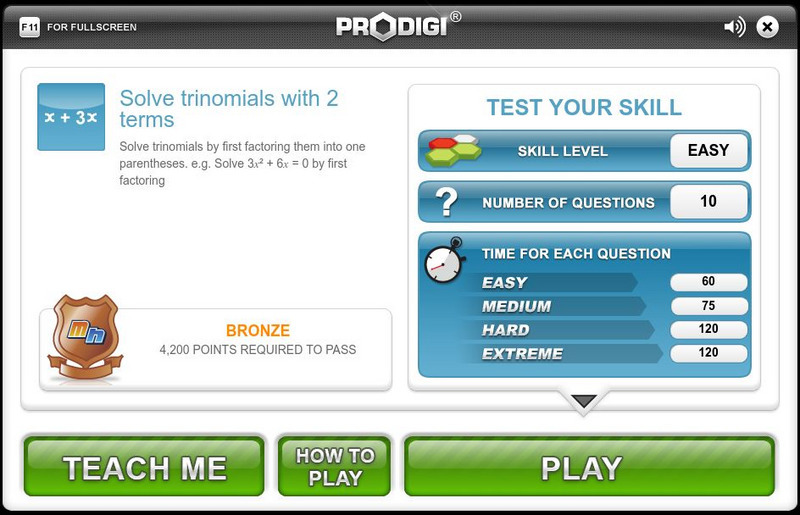Curated OER
Map Studies - Estimate And Measure Distance
First graders explore estimating and measuring distances. They analyze and discuss a map of New York State, make estimations, measure distances using yarn, and calculate total distances between cities on the map.
Math.com
Math.com: The Basics of Algebra: Like Terms
Students learn how to combine like terms in this algebra resource. A learning tutorial and practice problems to check for comprehension of the math concepts are included.
Mangahigh
Mangahigh: Algebra: Multiply Terms
Students learn about the concept of multiplying terms by exploring a tutorial. They can then test their knowledge by taking a ten question assessment that increases in difficulty as they correctly answer questions.
Quia
Quia: Algebra Terms
Do you need practice learning and remembering algebra vocabulary terms? This practice with flash cards is the web site for you! There is a link to a list of terms with definitions you can click if you want to see if you are correct.
Quia
Quia: Algebra Terms
Do you need practice learning and remembering algebra vocabulary terms? This concentration game is the web site for you! There is a link to a list of terms with definitions you can click if you want to see if you are correct.
Quia
Quia: Algebra Terms
Do you need practice learning and remembering algebra vocabulary terms? This matching game is the web site for you! There is a link to a list of terms with definitions you can click if you want to see if you are correct.
Quia
Quia: Algebra Terms
Do you need practice learning and remembering algebra vocabulary terms? This word search game is the web site for you! There is a link to a list of terms with definitions you can click if you want to see if you are correct.
Mangahigh
Mangahigh: Algebra: The Term to Term Rule
Students explore the concept of the term to term rule by working through an online tutorial and then attempting a ten question quiz that increases in difficulty as questions are answered correctly.
Interactive Mathematics
Interactive Mathematics: Add and Subtract Algebraic Expressions
Information is given on how to add and subtract algebraic expressions. Also included is information on terms, coefficients, and like terms, as well as examples to demonstrate how to simplify.
Cuemath
Cuemath: Algebraic Expression
This resource helps with understanding the concept of variables, constants, terms, and coefficients of any algebraic expression. Learn how to simplify algebraic expressions using algebraic formulas and the different types of expressions.
Math.com
Math.com: The Basics of Algebra: Simplifying
Students learn how to simplify algebraic expressions. A learning tutorial and practice problems to check for comprehension of the algebra concepts are included.
CK-12 Foundation
Ck 12: Algebra: Inequalities With the Distributive Property
[Free Registration/Login may be required to access all resource tools.] Students will use the distributive property to solve inequalities. Students can master the concept by watching videos, examining guided notes, reviewing vocabulary...
Mangahigh
Mangahigh: Jabara: Algebraic Simplification
Learn about the origins of algebra when you travel to Baghdad in the 9th century. You will have algebra problems to solve by moving terms around and simplifying numbers, until you have just the value of the variable left.
Shmoop University
Shmoop: Basic Algebra: Combining Like Terms
The algebra resource examines how to combine like terms. Students learn about the math concept through notes, examples, and practice exercises.
Shmoop University
Shmoop: Basic Algebra: Algebraic Expressions
The algebra resource examines algebraic expressions. Students learn about the math concept through notes, examples, and practice exercises.
Mangahigh
Mangahigh: Algebra: Add and Subtract Terms With Single Variables
This site provides students practice with the concept of simplifying expressions. Students can learn about the topic by completing an interactive tutorial. Students can then take a ten question timed test to practice the skill.
Mangahigh
Mangahigh: Algebra: Add and Subtract Algebraic Fractions Using Factoring
Students learn about the concept of adding algebraic fractions by exploring a tutorial. They can then test their knowledge by taking a ten question assessment that increases in difficulty as they correctly answer questions.
Mangahigh
Mangahigh: Algebra: Solve Equations by Rearranging
Students learn about the concept of solving quadratic equations by exploring a tutorial. They can then test their knowledge by taking a ten question assessment that increases in difficulty as they correctly answer questions.
Learning Wave Communications
Learning Wave: Algebra, Section 1
This resource covers the basic algebraic concepts of like terms, substitution, solving one- and two-step equations, and using formulas and problem solving. Sample problems and links to application problems are included.
CK-12 Foundation
Ck 12: Algebra: Equations With Variables on Both Sides
[Free Registration/Login may be required to access all resource tools.] This concept introduces solving equations with variables on both sides.
Mangahigh
Mangahigh: Algebra: Factor Using a Common Term
Students learn about the concept of factoring expressions by exploring a tutorial. They can then test their knowledge by taking a ten question assessment that increases in difficulty as they correctly answer questions.
Mangahigh
Mangahigh: Algebra: Factor Four Terms Into a Product of Two Expressions
Students watch an online tutorial on the concept of factoring polynomials . After watching, students test their knowledge by attempting ten practice problems that increase or decrease in difficulty based on their answers.
Mangahigh
Mangahigh: Algebra: Solve Trinomials With 2 Terms
Students learn about the concept of solving binomials by exploring a tutorial. They can then test their knowledge by taking a ten question assessment that increases in difficulty as they correctly answer questions.
Mangahigh
Mangahigh: Algebra: Add and Subtract Terms With Multiple Variables
This site provides students practice with the concept of simplifying expressions. Students can learn about the topic by completing an interactive tutorial. Students can then take a ten question timed test to practice the skill.


